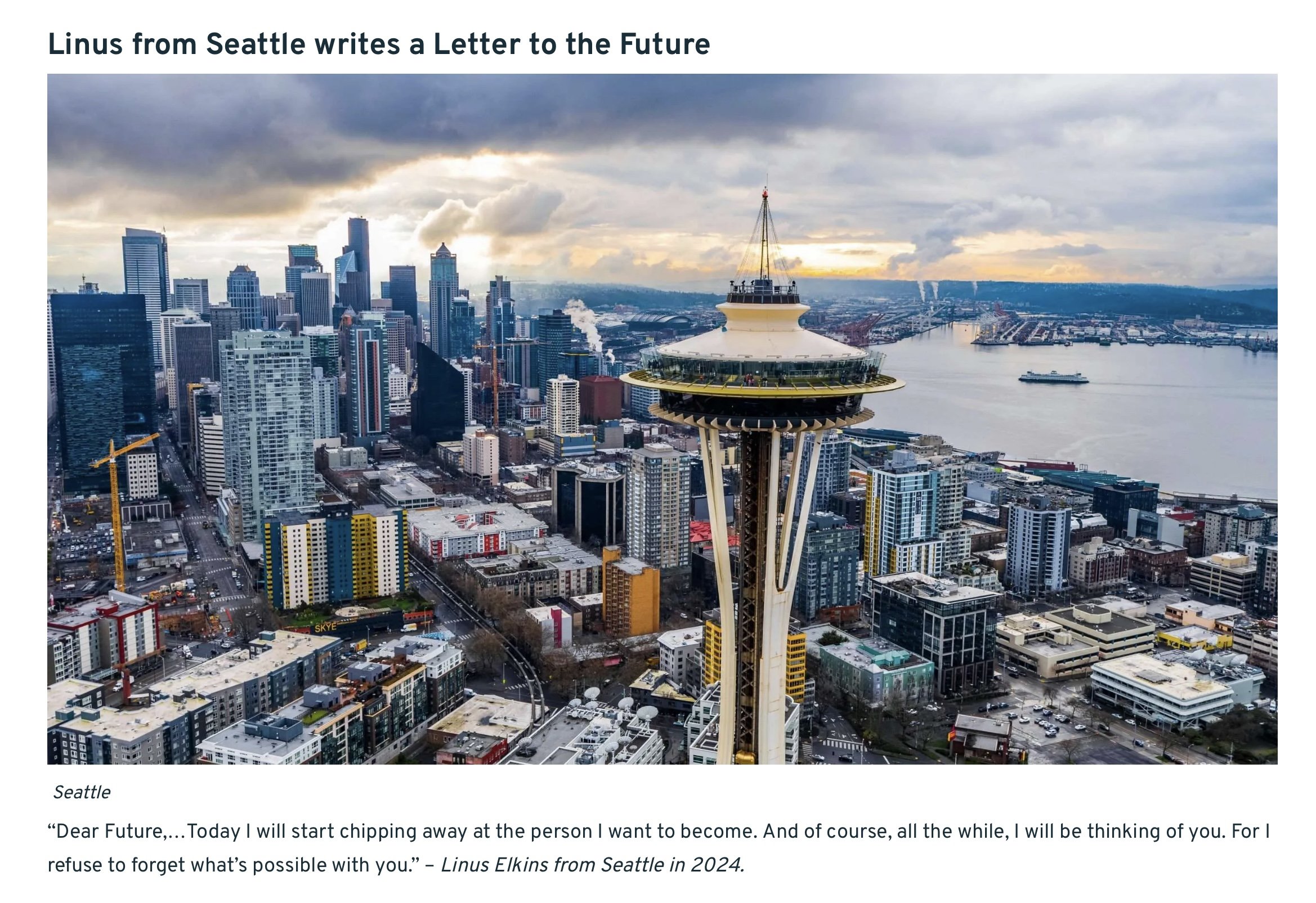Youth Voices from Our City of Literature
At the UNESCO Creative Cities Conference in Braga, Portugal in July, delegates from 35 Creative Cities around the world identified “Bringing Youth to the Table” as a theme for our shared work. According to the (UNESCO) World Youth Report (2020), there are 1.2 billion young people aged 15 to 24 years, accounting for 16 per cent of the global population. As they write, “Young people embody hope for better, innovative, and more effective solutions to the world’s challenges! UNESCO is working actively to ensure that their voices are heard because they matter.”
Here in Seattle’s City of Literature, young people are writing, reading, and organizing the way forward with creativity and courage. Here are just a few ways that young writers in Seattle have been leading the way for our literary community globally:
On August 12, 2024, the Creative Cities Network celebrated World Youth Day. Nottingham City of Literature convened young literary minds from around the world, hosting two online roundtable events featuring 17 young writers from 13 cities around the world. that brought together emerging artists from the global UNESCO Cities of Literature network. Participants shared their creative journeys, discussed ongoing projects, and exchanged insights with peers from diverse cultural backgrounds. Seattle was represented by Charlotte (Lottie) Soliven (she/her) (a high school Junior and a Seattle Youth Poetry Fellow).
“Everyone has that ability to be a storyteller”
Some of the key discussion points from the group included:
● A need to tackle existing gaps in school literacy curricula—where certain writing styles, and a diversity of writers and contemporary literature are missing.
● The importance of building connections and networking, of staying in touch and taking creative inspiration from one another. More meetings with this international youth advisory group.
● Ensuring opportunities are shared widely and with people who would most benefit from them—including in cities' peripheries. Domino effect of one opportunity leading to many more opportunities.
● The importance of free spaces such as museums as centers of creativity.
● The idea that storytelling and writing is for everyone—and how we can empower people through words.
● How can we make getting into the creative industries less daunting for young people?
● Opportunities for young writers to share work with one another—feedback on each other's work, international anthology, virtual open mics, joint writing projects.
“I think that every single person in this world has a story to write, everyone has a story to tell”
Another fantastic initiative of the Creative Cities Network was the “Letters to the Future” project, which included young writers from 11 Creative Cities to craft messages that speak directly to future generations. Check out this excerpt from Linus in Seattle, (courtesy of Nottingham City of Literature) and check out the link to read more letters from the young writers of the Creative Cities!
This month, Seattle City of Literature is highlighting UNESCO Sustainable Development Goal #11: Making Cities Safe, Sustainable, Resilient, and Inclusive. We asked a young writer named Toa Ghatak, a 17 year old senior in high school, to share her her thoughts about the connection between literature and sustainable development goal (SDG) #11. Toa wrote a lovely lyric essay on the topic, which you can read on our website here!
“Literature and humanities must work in tandem with the focus on STEM in our world to be able to make cities and human settlements inclusive, safe, resilient, and sustainable. ”


